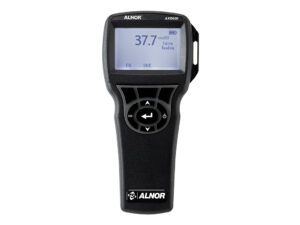20 Aug 2021
Evolution of measuring instruments

The evolution of technology has greatly influenced the field of measurement, providing scientists, engineers and technicians with more advanced and precise tools to assess the physical properties of fluids and gases. Among the commonly used measuring instruments are liquid column manometers and digital micromanometers, which each have their advantages and disadvantages. In this article, we will examine these two types of instruments, their differences, their evolution and their current applications.
Liquid column manometers
Liquid column manometers were among the first pressure measuring instruments used in history. They are based on the principle of hydrostatic pressure, where the height of the column of liquid in a tube is directly related to the pressure of the fluid or gas being measured. These pressure gauges are simple, inexpensive and can be used to measure a wide range of pressures.

Kimo Inclined Liquid Column Manometers TX Series
One of the most common types of liquid column manometers was the mercury manometer, where mercury is used as the liquid in the tube. However, due to the toxicity of mercury, many countries have restricted or banned its use, preferring non-toxic liquids such as water or oil.
These measuring instruments are still used in some specific applications where relatively low accuracy is sufficient. However, due to their mechanical nature, they can be subject to errors related to liquid viscosity and temperature variations.
Digital Micromanometers
With the advent of digital technology, digital micromanometers have revolutionized pressure measurement. These instruments use sophisticated electronic sensors to detect pressure variations. They then convert the signals into digital data displayed on a screen, providing a more accurate and instantaneous measurement of pressure.

Airflow Meter /Micromanometer Fluke 922
Digital micromanometers have many advantages over liquid column manometers. They are more accurate, easier to read and offer additional features such as data logging, wireless connectivity and compatibility with smart devices. Additionally, these instruments are often more compact and portable, making them ideal for field applications.
Comparison and Applications
The main difference between liquid column manometers and digital micromanometers is their accuracy and ease of use. Liquid column pressure gauges are suitable for applications where an approximate measurement of pressure is sufficient, such as in certain laboratory experiments, industrial process control or plumbing. However, their use is less common today due to concerns about mercury toxicity and limitations in accuracy and ease of use. Fixed positioning, level adjustment and zero verification.
Digital micromanometers are preferred in situations where accurate, real-time measurement is essential. They are used in fields such as aerospace, research laboratories, medical technologies and advanced industrial processes. Their digital capabilities and connectivity also make it possible to collect and analyze data for studies and monitoring.
AN ONGOING EVOLUTION
The evolution of measuring instruments, from liquid column manometers to digital micromanometers, has enabled significant advances in the measurement of the pressure of fluids and gases. Liquid column manometers, despite their simplicity and low cost, are gradually being replaced by more advanced and accurate digital technologies. Digital micromanometers offer enhanced functionality, better accuracy and ease of use, making them essential in many scientific and industrial fields. As technology continues to advance, it is exciting to see how these instruments will continue to evolve to meet future pressure measurement needs.